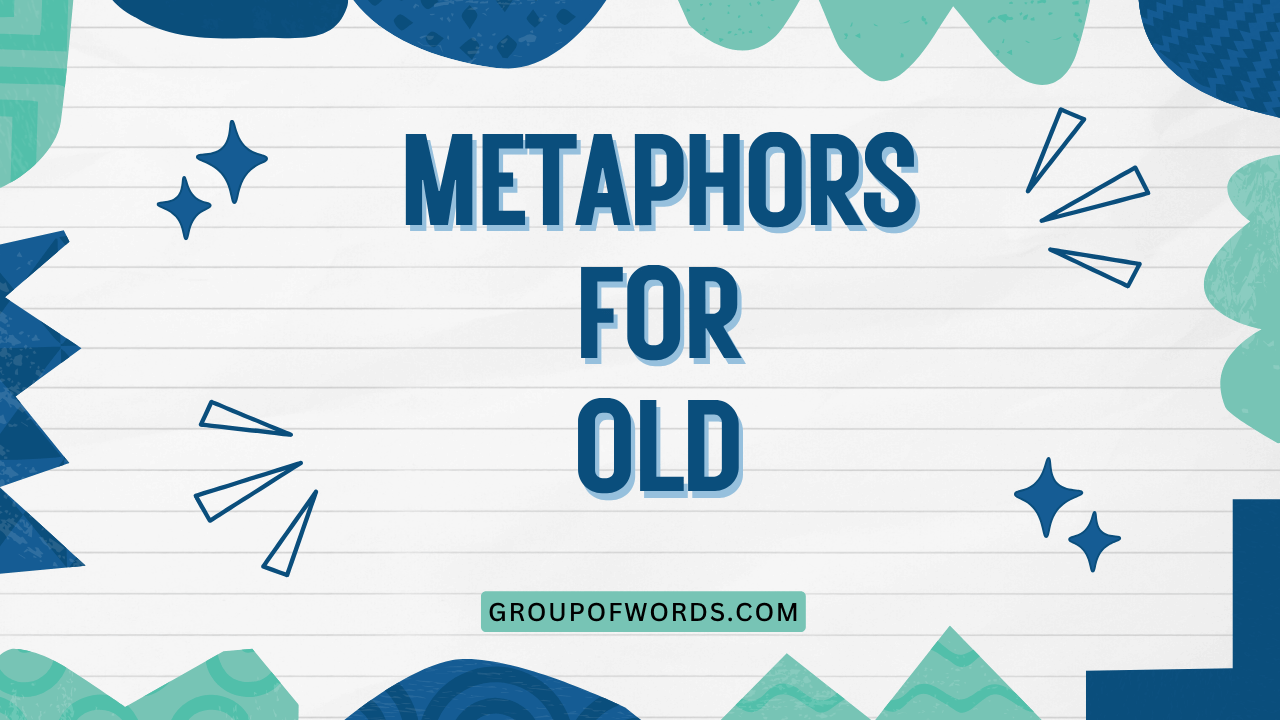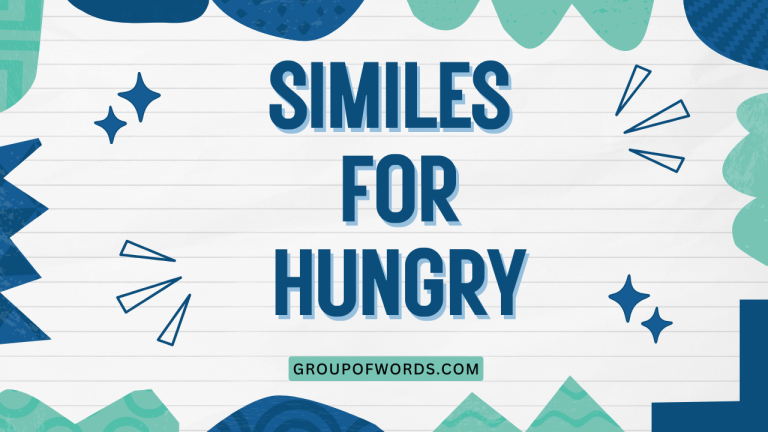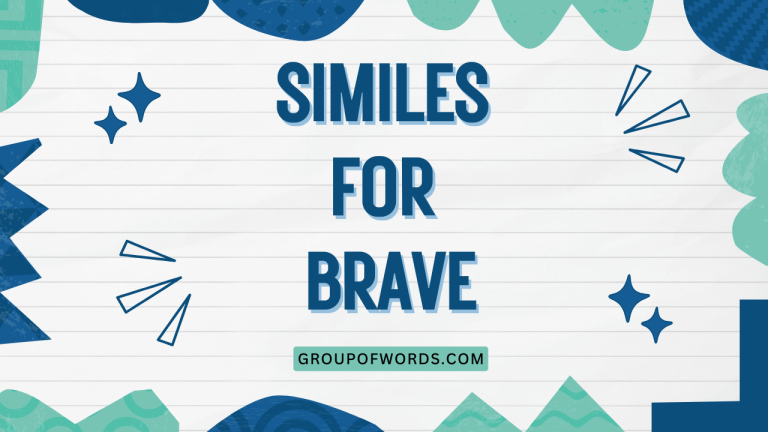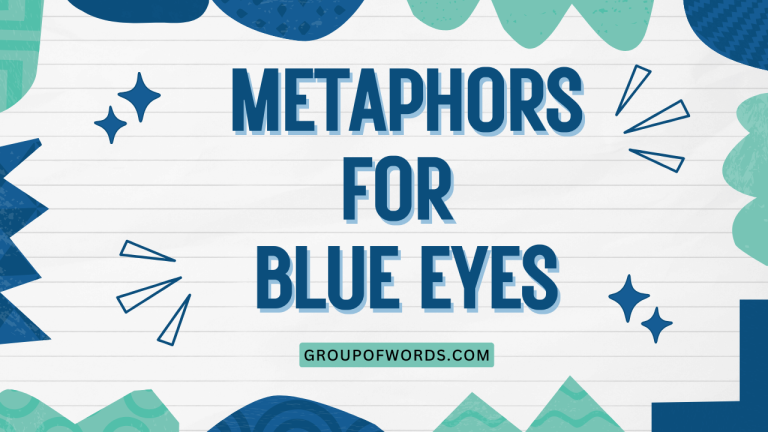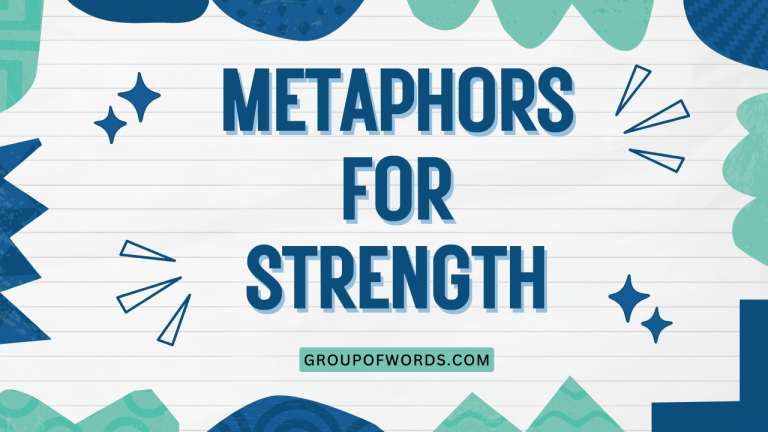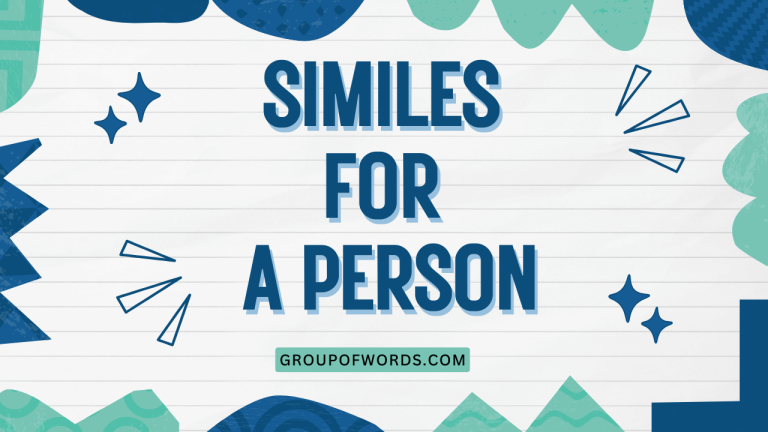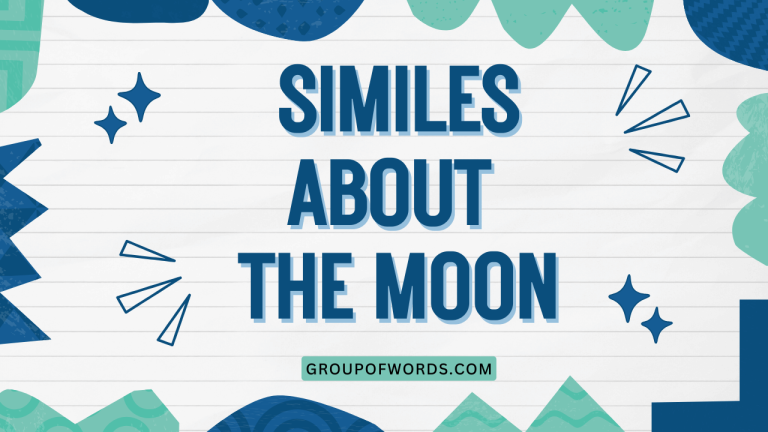Metaphors for Old: Understanding Figurative Language
Metaphors are powerful tools in the English language, allowing us to express complex ideas and emotions in vivid and relatable ways. When it comes to describing the concept of ‘old,’ metaphors become particularly poignant, reflecting societal attitudes, personal experiences, and the multifaceted nature of aging.
Mastering these metaphors not only enhances your understanding of English literature and everyday conversation but also provides a deeper insight into the human condition. This article explores the rich tapestry of metaphors used to represent old age, offering a comprehensive guide for learners of all levels.
This article will benefit students of English as a second language, literature enthusiasts, and anyone interested in exploring the nuances of language and how it reflects our perception of aging. By understanding the different types of metaphors and their implications, readers can improve their comprehension, writing skills, and overall appreciation of the English language.
Table of Contents
- Introduction
- Definition of Metaphor
- Structural Breakdown of Metaphors
- Types of Metaphors for Old
- Examples of Metaphors for Old
- Usage Rules for Metaphors
- Common Mistakes with Metaphors
- Practice Exercises
- Advanced Topics in Metaphorical Usage
- Frequently Asked Questions
- Conclusion
Definition of Metaphor
A metaphor is a figure of speech that directly compares two unlike things without using “like” or “as.” It asserts that one thing is another, creating an implicit comparison that highlights shared qualities or characteristics. Metaphors are essential for adding depth, emotion, and imagery to language, making it more engaging and memorable. They allow us to understand abstract concepts by relating them to something more concrete and familiar.
Metaphors function by transferring qualities from one concept (the source domain) to another (the target domain). In the context of “old,” the target domain is old age or the elderly, and the source domain can be anything from decaying objects to seasonal changes.
The effectiveness of a metaphor depends on the shared understanding and resonance between the source and target domains.
Metaphors can be classified based on their structure and the type of comparison they make. Some common categories include:
- Standard Metaphors: Direct comparisons, e.g., “He is a lion in his old age.”
- Extended Metaphors: Metaphors that are developed over several lines or throughout an entire work.
- Dead Metaphors: Metaphors that have become so common they are no longer recognized as figurative, e.g., “the heart of the matter.”
- Mixed Metaphors: Combinations of metaphors that are incongruous or illogical, e.g., “We’ll burn that bridge when we get to it.”
Structural Breakdown of Metaphors
Understanding the structure of a metaphor involves identifying its key components and how they interact to create meaning. The two main elements are:
- The Tenor: This is the subject of the metaphor, the thing being described. In the context of this article, the tenor is “old” or “old age.”
- The Vehicle: This is the object or concept used to describe the tenor. It’s the thing to which the tenor is being compared. Examples include “winter,” “a rusty machine,” or “a setting sun.”
The relationship between the tenor and the vehicle is crucial. The vehicle lends its qualities to the tenor, allowing us to see the tenor in a new light.
For instance, when we say “Old age is the winter of life,” the vehicle (winter) brings associations of coldness, dormancy, and decline to the tenor (old age).
Consider this example: “He is an old oak, weathered and strong.”
- Tenor: He (an old person)
- Vehicle: An old oak
- Shared Qualities: Weathered appearance, strength, resilience, age
The effectiveness of a metaphor lies in the strength and relevance of the shared qualities. A well-chosen vehicle can evoke powerful imagery and convey deep meaning, while a poorly chosen one can be confusing or ineffective.
Types of Metaphors for Old
Metaphors for ‘old’ can be categorized based on the themes and imagery they evoke. Here are some common types:
Natural Decay Metaphors
These metaphors compare old age to the natural process of decay and decomposition. They often emphasize the gradual decline of physical and mental abilities.
Examples include:
- “He was a crumbling ruin of his former self.”
- “Her mind was like an old book, its pages yellowed and brittle.”
- “His body was a worn-out garment, threadbare and faded.”
Mechanical Breakdown Metaphors
These metaphors liken the body to a machine that gradually wears down or breaks down over time. They highlight the loss of functionality and the need for repair or replacement.
Examples include:
- “His joints were rusty hinges, creaking with every movement.”
- “Her memory was a faulty hard drive, prone to crashing.”
- “His heart was a sputtering engine, struggling to keep running.”
Temporal Metaphors
These metaphors use time-related concepts to represent old age, emphasizing the passage of time and the approach of the end. Examples include:
- “He was in the twilight years of his life.”
- “She was nearing the sunset of her days.”
- “He was living on borrowed time.”
Journey Metaphors
These metaphors compare life to a journey, with old age representing the final stages of the trip. They often focus on the experiences, challenges, and reflections that occur along the way.
Examples include:
- “He was nearing the end of his long and winding road.”
- “She had reached the summit of her life, looking back on the valleys below.”
- “He was navigating the final stretch of his journey.”
Harvest Metaphors
These metaphors present old age as a time of reaping what has been sown throughout life. They focus on the wisdom, experience, and accomplishments that have accumulated over time.
Examples include:
- “She was in the autumn of her life, reaping the rewards of her hard work.”
- “He was a seasoned veteran, his mind a storehouse of knowledge.”
- “They were enjoying the fruits of their labor in their golden years.”
Winter Metaphors
Winter metaphors are commonly used to symbolize the final stage of life, drawing parallels between the cold, dormancy, and decline associated with winter and the challenges and changes that come with old age. These metaphors often evoke a sense of reflection, quietude, and the natural cycle of life and death.
- “Winter had settled upon her brow, etching lines of wisdom and weariness.”
- “He felt the chill of winter in his bones, a constant reminder of his age.”
- “The winter of his years was a time for quiet contemplation and reflection.”
Examples of Metaphors for Old
The following tables provide a variety of examples of metaphors for ‘old,’ categorized by type, with explanations of their meaning and effect. Each table contains at least 20 examples to illustrate the range and versatility of these metaphors.
This table showcases examples of Natural Decay Metaphors. These metaphors often evoke a sense of decline and fragility, highlighting the physical and mental changes that can occur with age.
| Metaphor | Explanation |
|---|---|
| He was a withered leaf, clinging to the branch of life. | Implies frailty and nearing the end of life. |
| Her memory was a faded photograph, its details blurred with time. | Suggests a loss of clarity and sharpness in memory. |
| His body was a crumbling edifice, slowly returning to dust. | Conveys a sense of physical decay and mortality. |
| She was a rusty gate, creaking open with difficulty. | Highlights stiffness and difficulty in movement. |
| His mind was a garden overgrown with weeds, its beauty obscured. | Suggests a decline in mental clarity and focus. |
| He was a tattered flag, waving weakly in the breeze. | Implies a loss of strength and vitality. |
| Her voice was a cracked record, skipping and fading. | Conveys a loss of vocal strength and clarity. |
| His eyes were clouded windows, their light dimmed with age. | Suggests a decline in vision and awareness. |
| She was a fragile vase, easily broken by the slightest touch. | Highlights vulnerability and physical frailty. |
| His bones were brittle branches, snapping under pressure. | Conveys a sense of physical weakness and susceptibility to injury. |
| His skin was parchment, thin and easily torn. | Emphasizes the fragility and delicacy of aging skin. |
| Her thoughts were cobwebs, easily brushed aside. | Suggests a lack of focus and mental clarity. |
| He was a shadow of his former self, diminished and frail. | Highlights the contrast between past strength and present weakness. |
| Her spirit was a flickering candle, threatened by the wind. | Conveys a sense of vulnerability and fading energy. |
| His body was a worn map, its landmarks faded and obscured. | Suggests a loss of physical vitality and direction. |
| She was a dried flower, her beauty preserved but lifeless. | Highlights the contrast between past beauty and present decline. |
| His laughter was a rusty hinge, stiff and infrequent. | Conveys a sense of diminished joy and spontaneity. |
| Her dreams were faded tapestries, their colors muted and worn. | Suggests a loss of vibrancy and imagination. |
| He was an antique clock, ticking slowly towards its final chime. | Emphasizes the passage of time and the approach of death. |
| Her heart was a tired drum, its beat growing fainter with each passing year. | Conveys a sense of physical exhaustion and declining health. |
| He was a broken doll, discarded and forgotten. | Implies a sense of loneliness and neglect. |
| Her mind was a dilapidated house, its rooms filled with shadows. | Suggests a decline in mental clarity and the presence of negative thoughts. |
| His body was a weathered stone, eroded by the relentless passage of time. | Conveys a sense of physical resilience but also the effects of aging. |
This table presents Mechanical Breakdown Metaphors. These metaphors often use imagery of machines and mechanisms to describe the aging process, highlighting the wear and tear on the body.
| Metaphor | Explanation |
|---|---|
| His joints were rusty gears, grinding with every movement. | Implies stiffness and difficulty in movement. |
| Her memory was a faulty computer, prone to crashing. | Suggests a decline in mental function and memory loss. |
| His heart was a sputtering engine, struggling to keep running. | Conveys a sense of physical strain and weakening health. |
| She was a broken record, repeating the same stories over and over. | Highlights repetitive behavior and memory loss. |
| His mind was a tangled wire, its connections frayed and weak. | Suggests confusion and difficulty in thinking clearly. |
| He was a worn-out battery, his energy depleted. | Implies a lack of vitality and exhaustion. |
| Her vision was a scratched lens, distorting reality. | Conveys a decline in visual clarity and perception. |
| His hearing was a muffled speaker, struggling to pick up sounds. | Suggests a decline in auditory perception. |
| She was a leaky faucet, constantly dripping energy. | Highlights a loss of vitality and stamina. |
| His body was a rickety machine, held together by spare parts. | Conveys a sense of physical fragility and reliance on medical intervention. |
| Her words were like a skipping CD, repeating the same phrases. | Emphasizes repetitive speech patterns and memory issues. |
| His thoughts were like a jammed printer, producing garbled output. | Suggests confusion and difficulty in expressing thoughts clearly. |
| He was a wind-up toy, slowly running out of steam. | Implies a gradual decline in energy and vitality. |
| Her spirit was a dimming lightbulb, flickering before going out. | Conveys a sense of fading energy and vitality. |
| His body was a rusty bicycle, its parts worn and unreliable. | Suggests physical decline and difficulty in movement. |
| She was an old television set, its picture fading and distorted. | Highlights a decline in mental clarity and perception. |
| His laughter was a creaking door, stiff and infrequent. | Conveys a sense of diminished joy and spontaneity. |
| Her memories were like fragmented files on a corrupted drive. | Suggests a loss of memory and difficulty in recalling past events. |
| He was an outdated model, no longer compatible with the modern world. | Emphasizes a sense of being out of touch and irrelevant. |
| Her heart was a ticking clock, counting down the final seconds. | Conveys a sense of urgency and the approach of death. |
| He was a broken instrument, unable to play the same tune. | Implies a loss of abilities and talents. |
| Her mind was a switchboard overloaded with calls. | Suggests mental overload and difficulty processing information. |
| His body was a worn-out engine, constantly overheating. | Conveys a sense of physical strain and exhaustion. |
This table illustrates Temporal Metaphors for old age. These metaphors often highlight the passage of time and the sense of nearing the end of life.
| Metaphor | Explanation |
|---|---|
| He was in the twilight years of his life. | Implies nearing the end of life, a time of reflection. |
| She was nearing the sunset of her days. | Conveys a sense of approaching the end of life. |
| He was living on borrowed time. | Suggests that he is living longer than expected. |
| She was in the autumn of her years. | Highlights a time of reflection and reaping the rewards of life. |
| He was in the winter of his life. | Conveys a sense of coldness, dormancy, and nearing the end. |
| She was in the final act of her play. | Implies nearing the end of life’s journey. |
| He was in the last chapter of his book. | Suggests nearing the end of life’s story. |
| She was counting down the days. | Conveys a sense of anticipation and awareness of limited time. |
| He was in the homestretch of his life. | Implies nearing the end of life’s journey. |
| She was in the eleventh hour of her life. | Suggests that time is running out. |
| His time was running out. | Conveys a sense of urgency and limited time. |
| She was in the waning years of her life. | Highlights a period of decline and diminishing vitality. |
| He was in the descending stage of his journey. | Implies nearing the end of life’s path. |
| She was in the final quarter of her game. | Suggests nearing the end of life’s challenges. |
| He was in the last inning of his ballgame. | Conveys a sense of nearing the end and the final outcome. |
| She was at the tail end of her adventure. | Highlights the final phase of life’s experiences. |
| He was in the sunset phase of his career. | Implies nearing retirement and the end of his professional life. |
| She was in the twilight of her reign. | Suggests nearing the end of her influence and power. |
| He was in the final stretch of his marathon. | Conveys a sense of nearing the end of a long and challenging journey. |
| She was approaching the finish line of her race. | Highlights the imminent end of life’s journey. |
| He was in the autumn of his career, reaping the rewards of his hard work. | Suggests a time of reflection and enjoying the fruits of his labor. |
| She was in the winter of her career, preparing for a period of rest and reflection. | Implies a time of dormancy and preparing for the end of her professional life. |
| He was at the end of his rope, struggling to hold on. | Conveys a sense of desperation and nearing the breaking point. |
This table provides examples of Journey Metaphors for old age. These metaphors compare life to a journey, with old age representing the final stages of the trip, often focusing on reflection and experience.
| Metaphor | Explanation |
|---|---|
| He was nearing the end of his long and winding road. | Implies approaching the end of life’s journey. |
| She had reached the summit of her life, looking back on the valleys below. | Conveys a sense of accomplishment and reflection on past experiences. |
| He was navigating the final stretch of his journey. | Suggests facing the challenges of old age. |
| She was on the last leg of her voyage. | Highlights approaching the end of life’s adventure. |
| He was sailing into the sunset. | Conveys a peaceful and serene end to life. |
| She was at the crossroads of her life. | Implies a moment of decision and reflection. |
| He was on the final descent of his mountain climb. | Suggests nearing the end of life’s challenges. |
| She was approaching the harbor of her life. | Conveys a sense of safety and rest at the end of life’s journey. |
| He was nearing the destination of his pilgrimage. | Implies approaching the fulfillment of life’s purpose. |
| She was on the home stretch of her marathon. | Suggests nearing the end of life’s endurance. |
| His life was a long and arduous trek. | Conveys a sense of challenges and perseverance. |
| She had reached the final stop on her itinerary. | Highlights the end of life’s planned experiences. |
| He was at the gateway to eternity. | Implies approaching the afterlife or the end of existence. |
| She was on the threshold of a new beginning. | Suggests a transition to a different state of being. |
| He was approaching the end of the line. | Conveys a sense of finality and the end of the journey. |
| She was at the last turn of her road. | Highlights approaching the final stages of life. |
| His life was a ship nearing its final port. | Implies approaching the end of life’s voyage. |
| She had completed her earthly travels. | Suggests the end of life and the beginning of the afterlife. |
| He was at the edge of the world. | Conveys a sense of being at the boundary of life and death. |
| She was on the brink of eternity. | Highlights the imminent transition to the afterlife. |
| He was nearing the final frontier. | Implies approaching the unknown and the end of life’s exploration. |
| She had reached the end of her rainbow. | Suggests the end of life’s dreams and aspirations. |
| He was at the terminus of his journey. | Conveys a sense of finality and the end of the road. |
Usage Rules for Metaphors
Using metaphors effectively involves understanding the following rules:
- Clarity: Ensure the comparison is clear and understandable. The connection between the tenor and vehicle should be easily recognizable.
- Relevance: Choose a vehicle that has relevant qualities to the tenor. The shared characteristics should be meaningful and contribute to the overall message.
- Originality: Strive for fresh and original metaphors. Avoid clichés and overused comparisons that have lost their impact.
- Consistency: Maintain consistency within an extended metaphor. Avoid mixing metaphors that create illogical or confusing images.
- Context: Consider the context in which the metaphor is used. The appropriateness of a metaphor depends on the audience, tone, and purpose of the communication.
Exceptions:
- Dead Metaphors: While generally discouraged in creative writing, dead metaphors are acceptable in everyday language and technical contexts.
- Mixed Metaphors: While often considered a mistake, mixed metaphors can be used intentionally for humorous or satirical effect.
When using metaphors for “old,” be mindful of the potential for ageism and negative stereotypes. Choose metaphors that are respectful and nuanced, avoiding those that perpetuate harmful generalizations about aging.
Common Mistakes with Metaphors
Here are some common mistakes to avoid when using metaphors:
- Mixed Metaphors: Combining two or more metaphors that are incongruous or illogical.
- Incorrect: “We’ll cross that bridge when we burn it.”
- Correct: “We’ll cross that bridge when we get to it.” or “We’ll burn that bridge when we have to.”
- Clichés: Using overused and predictable metaphors that have lost their impact.
- Clichéd: “He was as old as the hills.”
- More Original: “His face was a roadmap of wrinkles, each line telling a story of the years.”
- Inappropriate Metaphors: Using metaphors that are offensive, insensitive, or inconsistent with the tone of the writing.
- Inappropriate: “Old age is a disease.”
- More Appropriate: “Old age is a chapter filled with memories.”
- Lack of Clarity: Using metaphors that are too obscure or confusing for the audience to understand.
- Unclear: “His mind was a kaleidoscope of forgotten dreams.”
- Clearer: “His mind was filled with a vibrant mix of memories, some clear and others fragmented.”
Practice Exercises
Test your understanding of metaphors for ‘old’ with the following exercises. Identify the type of metaphor used in each sentence and explain its meaning.
Exercise 1: Identifying Metaphor Types
| Question | Answer |
|---|---|
| 1. She was in the autumn of her years, reaping the rewards of a life well-lived. | Harvest Metaphor: Suggests a time of reflection and enjoying the fruits of one’s labor. |
| 2. His joints were rusty hinges, creaking with every step he took. | Mechanical Breakdown Metaphor: Conveys stiffness and difficulty in movement. |
| 3. He was a weathered oak, standing strong against the storms of life. | Natural Decay Metaphor: Implies resilience and strength despite age. |
| 4. She was nearing the sunset of her days, casting long shadows behind her. | Temporal Metaphor: Suggests approaching the end of life and reflecting on the past. |
| 5. His mind was a garden overgrown with weeds, memories choked by forgetfulness. | Natural Decay Metaphor: Conveys a decline in mental function and clarity. |
| 6. He was on the final leg of his journey, the destination drawing near. | Journey Metaphor: Implies nearing the end of life’s path. |
| 7. Her heart was a tired drum, its beat growing fainter with each passing year. | Mechanical Breakdown Metaphor: Conveys a sense of physical exhaustion and declining health. |
| 8. He was in the winter of his life, the cold winds of age chilling his bones. | Winter Metaphor: Suggests a time of dormancy, reflection, and nearing the end. |
| 9. She was a crumbling statue, her features eroded by time and experience. | Natural Decay Metaphor: Conveys physical decline and the effects of aging. |
| 10. His words were like a skipping record, repeating the same stories over and over. | Mechanical Breakdown Metaphor: Highlights repetitive behavior and memory loss. |
Exercise 2: Creating Your Own Metaphors
| Question | Answer |
|---|---|
| 1. Create a metaphor comparing old age to a library. | Old age is a vast library, filled with countless stories waiting to be rediscovered. |
| 2. Create a metaphor comparing an old person’s mind to a musical instrument. | His mind was like a well-worn violin, its sound perhaps a little scratchy, but filled with the richness of countless melodies played over the years. |
| 3. Create a metaphor comparing an old person’s body to a house. | Her body was an old house, its foundation strong but showing the wear and tear of years, each creak and groan a testament to the storms it had weathered. |
| 4. Create a metaphor comparing old age to a season. | Old age is like autumn, a time of vibrant colors and gentle decline, where the leaves of experience fall to nourish new growth. |
| 5. Create a metaphor comparing an old person’s memories to a collection of photographs. | Her memories were like a faded photo album, each page revealing glimpses of a life filled with joy, sorrow, and everything in between. |
| 6. Create a metaphor comparing old age to a garden. | Old age is a garden, where some flowers have withered, but others bloom with a wisdom and beauty that only time can cultivate. |
| 7. Create a metaphor comparing an old person’s spirit to a flame. | His spirit was like a flickering flame, still burning brightly despite the winds of time and adversity. |
| 8. Create a metaphor comparing an old person’s wisdom to a map. | Her wisdom was a well-worn map, guiding others through the complexities of life with the clarity of experience. |
| 9. Create a metaphor comparing old age to a river. | Old age is a river, flowing gently towards the sea, carrying with it the accumulated wisdom and experiences of a lifetime. |
| 10. Create a metaphor comparing an old person’s life to a quilt. | Her life was like a patchwork quilt, each square representing a different experience, stitched together with love and resilience to create a beautiful and unique whole. |
Advanced Topics in Metaphorical Usage
For advanced learners, consider exploring these topics:
- Extended Metaphors: Analyzing how a single metaphor can be developed and sustained throughout an entire work.
- Subverted Metaphors: Examining how writers intentionally twist or challenge conventional metaphors to create new meanings.
- Cultural Differences in Metaphorical Usage: Investigating how metaphors vary across different cultures and languages.
- The Role of Metaphors in Shaping Thought: Exploring the cognitive impact of metaphors and how they influence our understanding of the world.
Delving deeper into these advanced topics will enhance your critical thinking skills and broaden your understanding of the power and complexity of metaphorical language.
Frequently Asked Questions
Here are some frequently asked questions about metaphors for ‘old’:
- What is the difference between a metaphor and a simile?
A metaphor directly equates two unlike things, while a simile uses “like” or “as” to make a comparison. For example, “He is a lion” (metaphor) vs. “He is like a lion” (simile).
- Why are metaphors so powerful in language?
Metaphors allow us to understand abstract concepts by relating them to something more concrete and familiar. They add depth, emotion, and imagery to language, making it more engaging and memorable.
- How can I improve my ability to understand metaphors?
Read widely, pay attention to the language used by skilled writers and speakers, and practice identifying and interpreting metaphors in different contexts. Consider the shared qualities between the tenor and vehicle.
- Are some metaphors for ‘old’ considered offensive?
Yes, metaphors that perpetuate negative stereotypes or dehumanize older people can be offensive. It’s important to choose metaphors that are respectful and nuanced.
- What is a “dead metaphor,” and how is it different from a regular metaphor?
A dead metaphor is a metaphor that has become so common that it is no longer recognized as figurative. For example, “the leg of the table” was once a metaphor, but it is now a standard expression.
- How can I avoid using clichés when creating metaphors?
Brainstorm a wide range of possible vehicles and choose the most original and unexpected one. Focus on specific details and sensory imagery to create a unique comparison.
- Can metaphors be used in non-fiction writing?
Yes, metaphors can be used effectively in non-fiction writing to explain complex concepts, engage the reader, and add depth to the analysis. However, it’s important to use them judiciously and ensure they are appropriate for the tone and purpose of the writing.
- How do cultural differences affect the interpretation of metaphors?
Metaphors are often rooted in cultural experiences and values, so their interpretation can vary across different cultures. A metaphor that is clear and meaningful in one culture may be confusing or offensive in another.
Conclusion
Metaphors for ‘old’ offer a rich and nuanced way to explore the complexities of aging. From the imagery of natural decay to the symbolism of winter, these figures of speech provide a powerful lens through which to understand the physical, emotional, and social aspects of growing old.
By mastering the art of metaphorical language, you can enhance your communication
, deepen your understanding of human experience, and appreciate the beauty and versatility of the English language.
